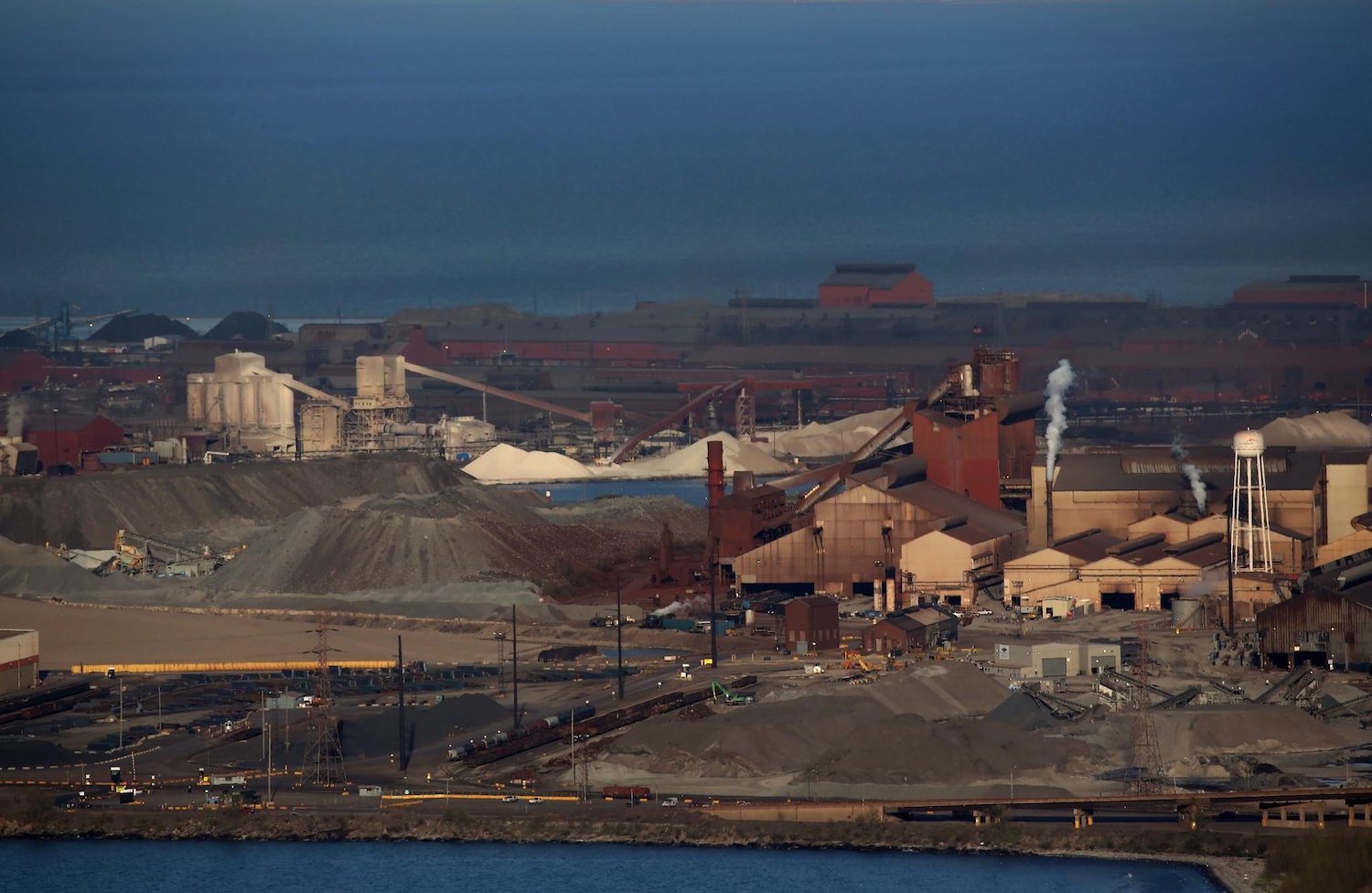Once again, the Hoosiers have been soiling our drinking water.
Earlier this month, the U.S. Steel mill in Portage spilled oil into Lake Michigan, closing all the beaches in the Indiana Dunes. Just two weeks before that, on Sept. 27, U.S. Steel released iron into the lake, producing an “orange plume” — and closing nearby beaches.
U.S. Steel is such a serial polluter of Lake Michigan that it recently signed a consent decree with the federal government, agreeing to pay $1.2 million for costs related to releasing the carcinogen hexavalent chromium into the lake in 2017.
Farther up the shore, the ArcelorMittal steel mill (now known as Cleveland-Cliffs) dumped toxic ammonia and cyanide into Burns Harbor in 2019, killing thousands of fish.
What’s the state of Indiana doing to prevent its steel mills from polluting the body of water Hammond-bred broadcaster Jean Shepherd once called “Queen of the Lakes”? Not much. Just last month, the Indiana Department of Environmental Management renewed U.S. Steel’s wastewater discharge permit for another five years.
After the Sept. 27 iron spill, Indiana state Rep. Maureen Bauer, D-South Bend, tweeted that “[t]he continued contamination of Lake Michigan is a symptom of Indiana’s complete disregard for environmental health. This is the latest in a series of wastewater violations by U.S. Steel since 2013 that have helped Indiana lead the nation with the most toxic chemical releases.” Save the Dunes and other environmental organizations wrote a letter to Gov. Eric Holcomb, declaring that “Indiana’s system of water pollution control regulation is broken,” and demanding the state strengthen pollution controls in future discharge permits to steel mills.
Unfortunately, “IDEM permitting allows industry to self-monitor/self-test, leaving the fox to guard the hen house,” Beverly Shores resident Susan Thomas wrote in a guest column for the Post-Tribune. “It was a whistleblower, not IDEM, [who] revealed repeated fraudulent testing from ArcelorMittal following the 2019 spills.” IDEM did rule that U.S. Steel violated its permit as a result of this fall’s spills.
(It actually makes some environmental sense to put a steel mill on a lake. In 2006, I rode the ore freighter Joseph L. Block from ArcelorMittal in East Chicago to Escanaba, Michigan, to pick up a load of taconite from the North Country mines. A sailor explained that a ship burns 1,200 gallons of diesel fuel a day to transport 30,000 tons of taconite. A convoy of semi-trailers carrying the same load would burn 15,600 gallons of diesel. But as Save the Dunes argued, “that cannot parlay into a free pass to pollute.”)
Clearly, there’s only one way to protect the lake from which 6.5 million Illinoisans drink water: Given its repeated abuse of Lake Michigan, Indiana no longer deserves to be a Great Lakes state. The Enabling Act of 1816, which granted Indiana statehood, declared that its northern boundary would be “drawn through a point ten miles north of the southern extreme of Lake Michigan,” guaranteeing it access to the Great Lakes, like its neighbors Michigan and Illinois. Indiana has only 45 miles of shoreline, compared to Michigan’s 3,224, but it sullies the waters far more. Michigan derives its identity from the Great Lakes, and takes their protection seriously. In Indiana — a mostly rural, agricultural state — the lake is remote from the state’s major population center, and, as Post-Tribune columnist Thomas writes, “Indiana industry is emboldened by a Republican supermajority in the State House that defers to party-line on environmental issues and safety regulations, ignoring public outrage.”
The solution? Indiana should cede Lake County to Illinois, and Porter and LaPorte counties to Michigan. This would make sense from a cultural, as well as environmental, standpoint. Northwest Indiana, known as the Calumet Region, or simply “The Region,” has been described as “an urban barnacle on the underside of Chicago,” sharing the big city’s accents, ethnic stock and athletic affiliations. A smoky, odoriferous landscape of steel mills and oil refineries, “Da Region” is so at odds with small-town Indiana that its inhabitants are called “Region Rats” (a shortening of “millrat”), especially down at IU. Remarking on Indiana’s reputation as a Red State, a Region Rat once told me, “That’s those Colts fans; up here, we root for Da Bears and Da Democrats.” Indiana would lose its steel mills, but we’d also take Gary off their hands, so they might consider it a square deal.
With LaPorte and Porter counties, Michigan would gain the Indiana Dunes National Park (created by the advocacy of an Illinois senator, Paul Douglas), part of the same lakefront eco-system as its own Warren Dunes. It would also gain even more Chicagoans’ vacation homes, in Beverly Shores and Long Beach. (When Oprah Winfrey lived in Chicago, she owned a getaway in LaPorte County.) Michiganders know how to protect sand dunes and how to keep FIPs in their place, so they’d have no problem absorbing Indiana’s rustic shoreline.
Granting Indiana a sliver of Great Lakes shoreline may have been justified 200 years ago, but that was long before chemists invented hexavalent chromium. Allowing the Hoosiers to keep these shores is too dangerous.



